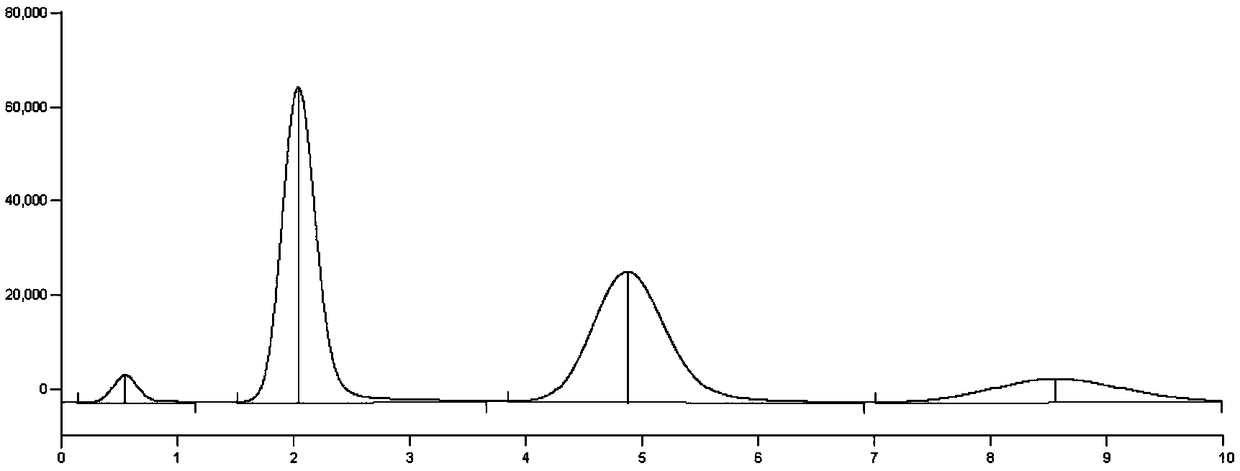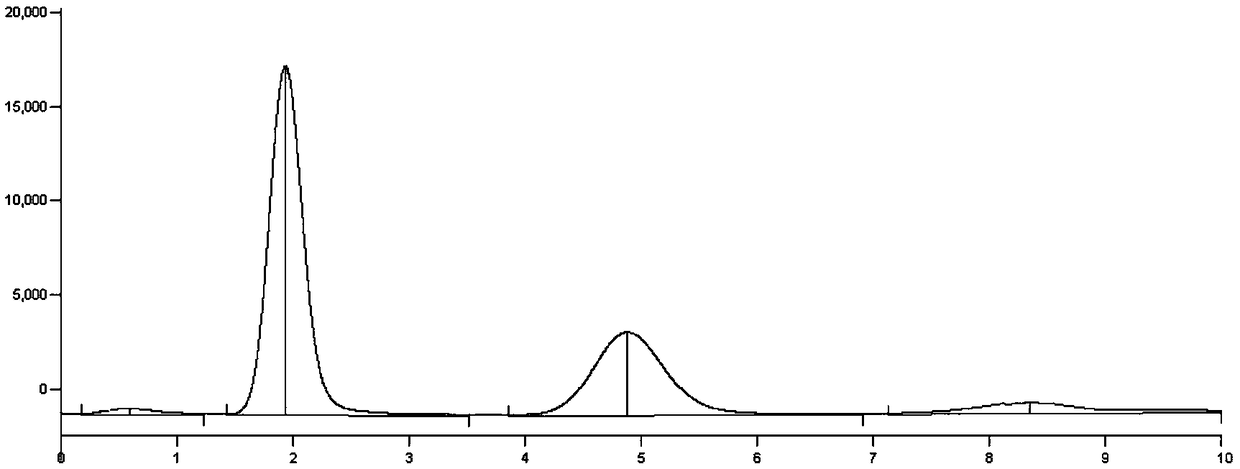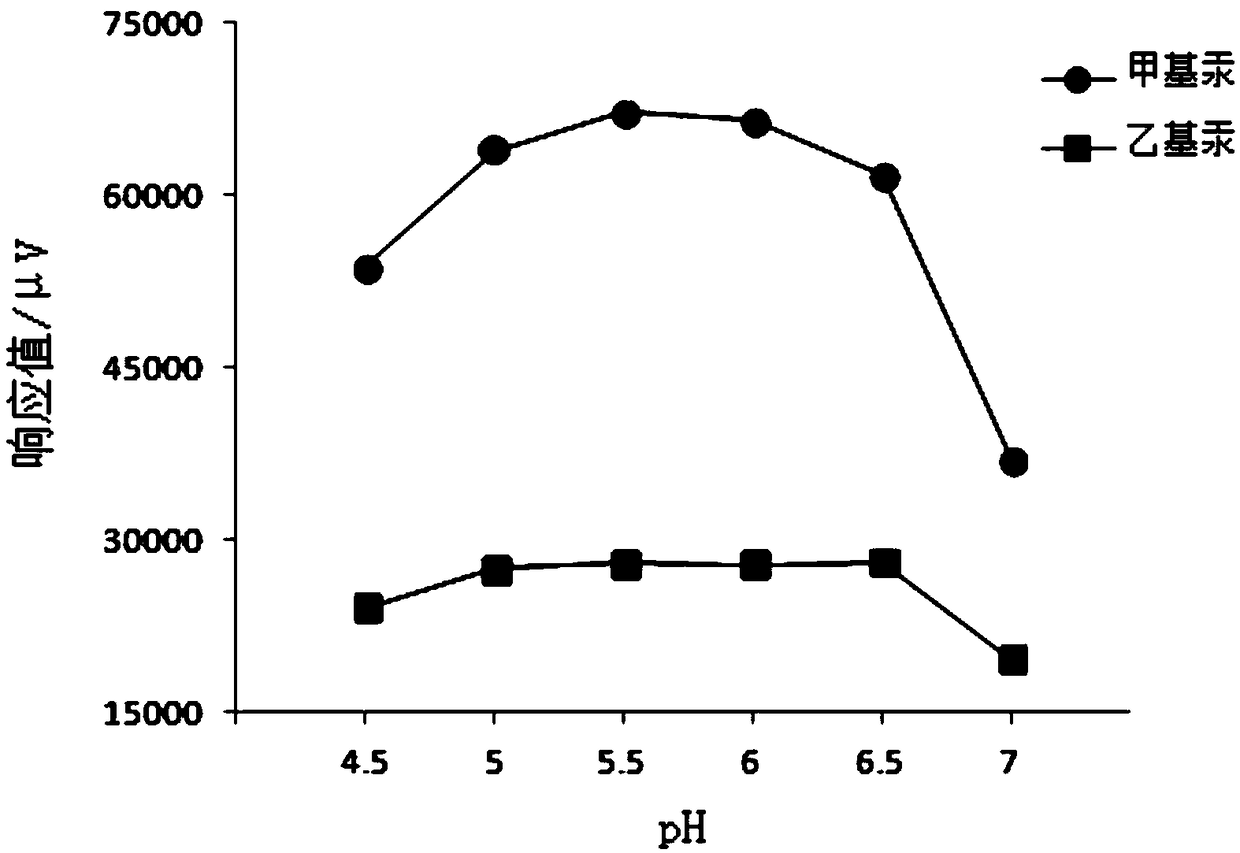Method for testing methyl mercury and ethyl mercury in aquatic feed
A technology for aquatic feed and methylmercury, which is applied in the direction of measuring devices, material separation, and analytical materials, etc., can solve the problems that cannot fully meet the measurement requirements, and achieve the effects of low cost, high purging efficiency, high sensitivity and selectivity
- Summary
- Abstract
- Description
- Claims
- Application Information
AI Technical Summary
Problems solved by technology
Method used
Image
Examples
Embodiment 1
[0053] Determination of methylmercury and ethylmercury in aquafeed samples involves the following steps:
[0054] a. Prepare sample solution and blank solution:
[0055] Dry the aquatic feed sample at 55-65°C for 24 hours to make a powder, weigh 1g of the powder, add 35-40mL of potassium bromide solution and 3mL of copper sulfate solution to mix to form a sample mixture, and place it in the sample bottle of the simultaneous distillation device After soaking for at least 2 hours, distill and extract simultaneously with 20-25 mL of dichloromethane placed in the solvent bottle of the simultaneous distillation device for at least 2 hours under water-cooling conditions, wherein the heating temperature of the sample mixture is 100-120 °C, and the heating temperature of dichloromethane 55-65°C, collect the organic phase, add 30-35mL deionized water and 3-4 polytetrafluoroethylene zeolites, heat at 60-65°C for stripping until the visible organic phase disappears, and then heat for 3-4...
Embodiment 2
[0125] According to the assay method described in Example 1, 14 batches of commercially available aquatic feed samples were tested, including 5 batches of fish feed, 2 batches of red fish meal for feed, 4 batches of shrimp feed and 3 batches of crab feed. The content of base mercury is shown in Table 9. It can be seen from Table 9 that methylmercury and ethylmercury may be contained in aquatic feed, and the content levels of methylmercury and ethylmercury are relatively low, but the detection limit and quantitative limit of the method of the present invention can meet the requirements of methylmercury in aquatic feed. Testing requirements for methylmercury and ethylmercury.
[0126] Table 9: Contents of methylmercury and ethylmercury in 14 batches of aquafeed samples
[0127]
[0128]
[0129] Note: "ND" means that the detection value of the analyte element is less than the quantitative limit of the method.
PUM
 Login to View More
Login to View More Abstract
Description
Claims
Application Information
 Login to View More
Login to View More - R&D
- Intellectual Property
- Life Sciences
- Materials
- Tech Scout
- Unparalleled Data Quality
- Higher Quality Content
- 60% Fewer Hallucinations
Browse by: Latest US Patents, China's latest patents, Technical Efficacy Thesaurus, Application Domain, Technology Topic, Popular Technical Reports.
© 2025 PatSnap. All rights reserved.Legal|Privacy policy|Modern Slavery Act Transparency Statement|Sitemap|About US| Contact US: help@patsnap.com



